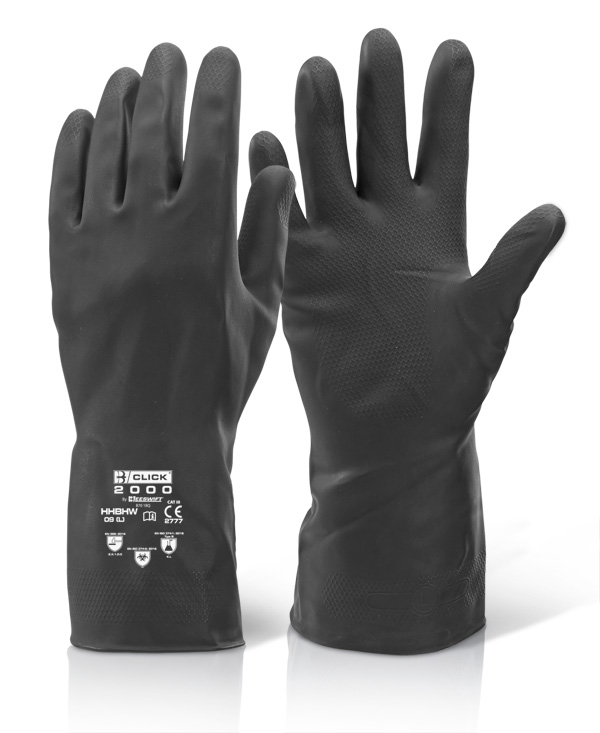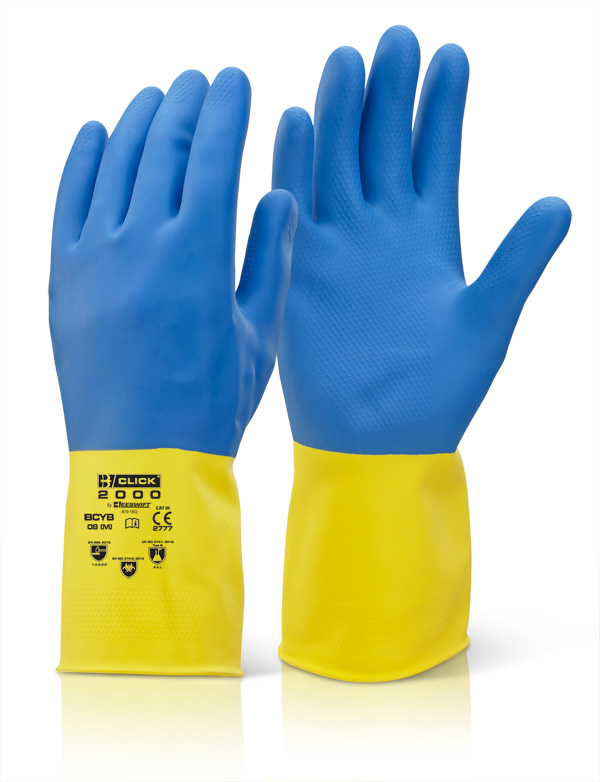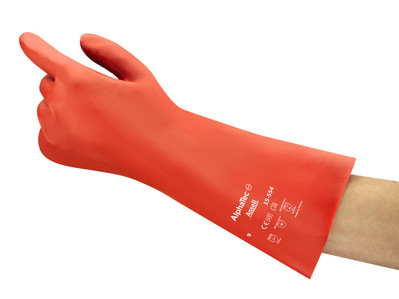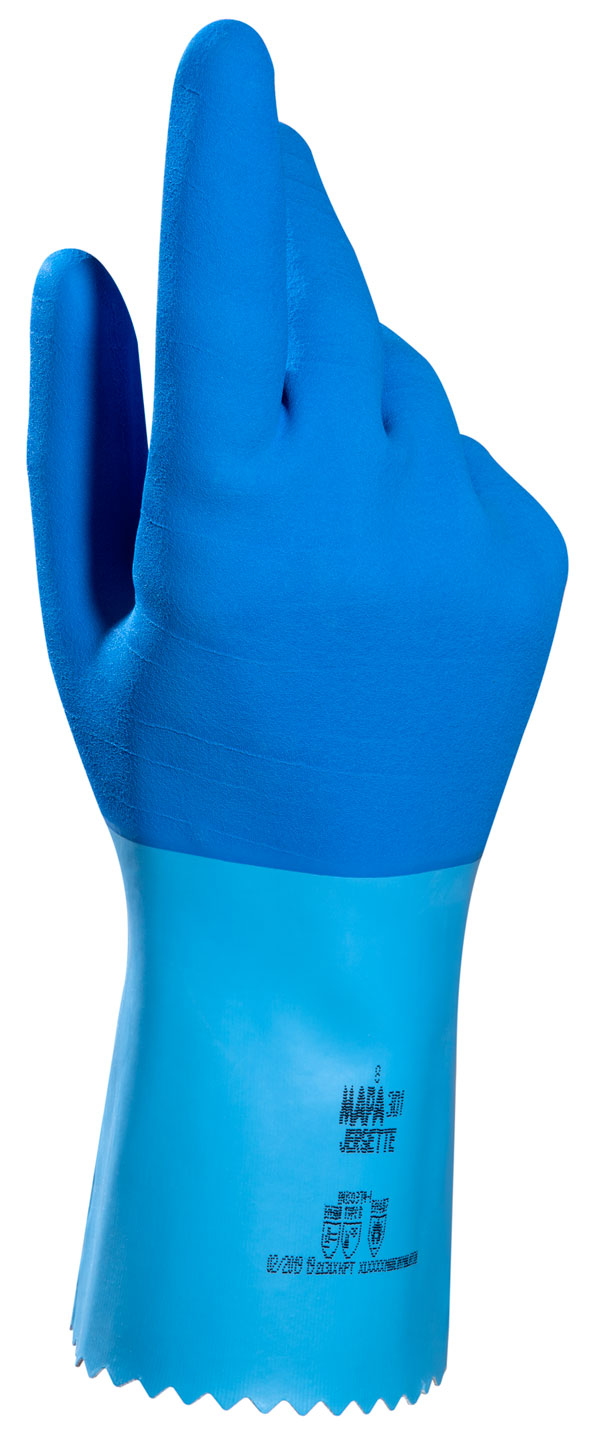Gloves — Chemical
• Heavy weight rubber glove.
• Manufactured from neoprene blended natural latex.
• Cotton flock lining.
• Resistant to selected chemicals and acids.
• EN388: 2016
• Level 2 - Abrasion
• Level X - Cut Resistance
• Level 1 - Tear Resistance
• Level 1 - Puncture
• Level 0 - ISO 13997 Cut Resistance
• EN 374-1: 2016 - TYPE C
Chemical - Breakthrough Time
Methanol (A) - More than 10 Mins (Level 1)
Sulphuric Acid 96% (L) - More than 120 Mins (Level 4)
Sodium Hydroxide 40% (K) - More than 480 Mins (Level 6)
• Heavy weight rubber glove.
• Withstands repeated rubbing and scuffing.
• Neoprene blended natural latex
• Offers sensitivity and comfort.
• Remain flexible and wearer friendly throughout the life of the product.
• Resistant to some chemicals and acids.
• EN388: 2016
• Level 1 - Abrasion
• Level X - Cut Resistance
• Level 2 - Tear Resistance
• Level 0 - Puncture
• Level 0 - ISO 13997 Cut Resistance
• EN 374-5: 2016
• EN 374-1: 2016
Chemical - Breakthrough Time
Methanol (A) - More than 30 Mins (Level 2)
Sulphuric Acid 96% (L) - More than 120 Mins (Level 4)
Sodium Hydroxide 40% (K) - More than 480 Mins (Level 6)
• One of the only gloves suitable for handling strong organic solvents
• PVA (Polyvinyl alcohol) coating out-performs most other types of chemical-resistant gloves
• Virtually inert in aromatic and chlorinated solvents
• Comfortable anatomical glove with precurved fingers and winged thumb. Easier to manipulate and less tiring to wear
• Soft two-piece knitted liner. Cushions the hand and absorbs perspiration
• Pre-curved fingers and winged thumb
• Supported glove with interlock cotton liner
• 14 (355mm) Length
• EN ISO 374-1:2016 Type A Protective gloves against dangerous chemicals and micro-organisms. Terminology and performance requirements for chemical risks, BCDFIJ
• EN ISO 374-5:2016 Protective gloves against dangerous chemicals and micro-organisms. Terminology and performance requirements for micro-organisms risks
• EN 388:2016 Protective gloves against mechanical risks 3121A
• Natural rubber coated, textile supported for maximum comfort for long-term work in aggressive environments
• Freedom of movement, due to the anatomical shape and excellent comfort from the seamless textile support
• Good tear resistance
• Good resistance to many diluted acids and bases
• EN 388:2016 Protective gloves against mechanical risks 2131X
• EN ISO 374-1:2016 Type B Protective gloves against dangerous chemicals and micro-organisms. Terminology and performance requirements for chemical risks, KPT
• EN 407 Protective gloves against thermal risks X1XXXX
Key applications include:
• Construction Industry (Masons / Plasterers) - Preparing and pouring mortar and cement
• Aeronautics industry - Work with composite materials (resins)
• Local Authorities (Cleaning) - Handling household detergents







